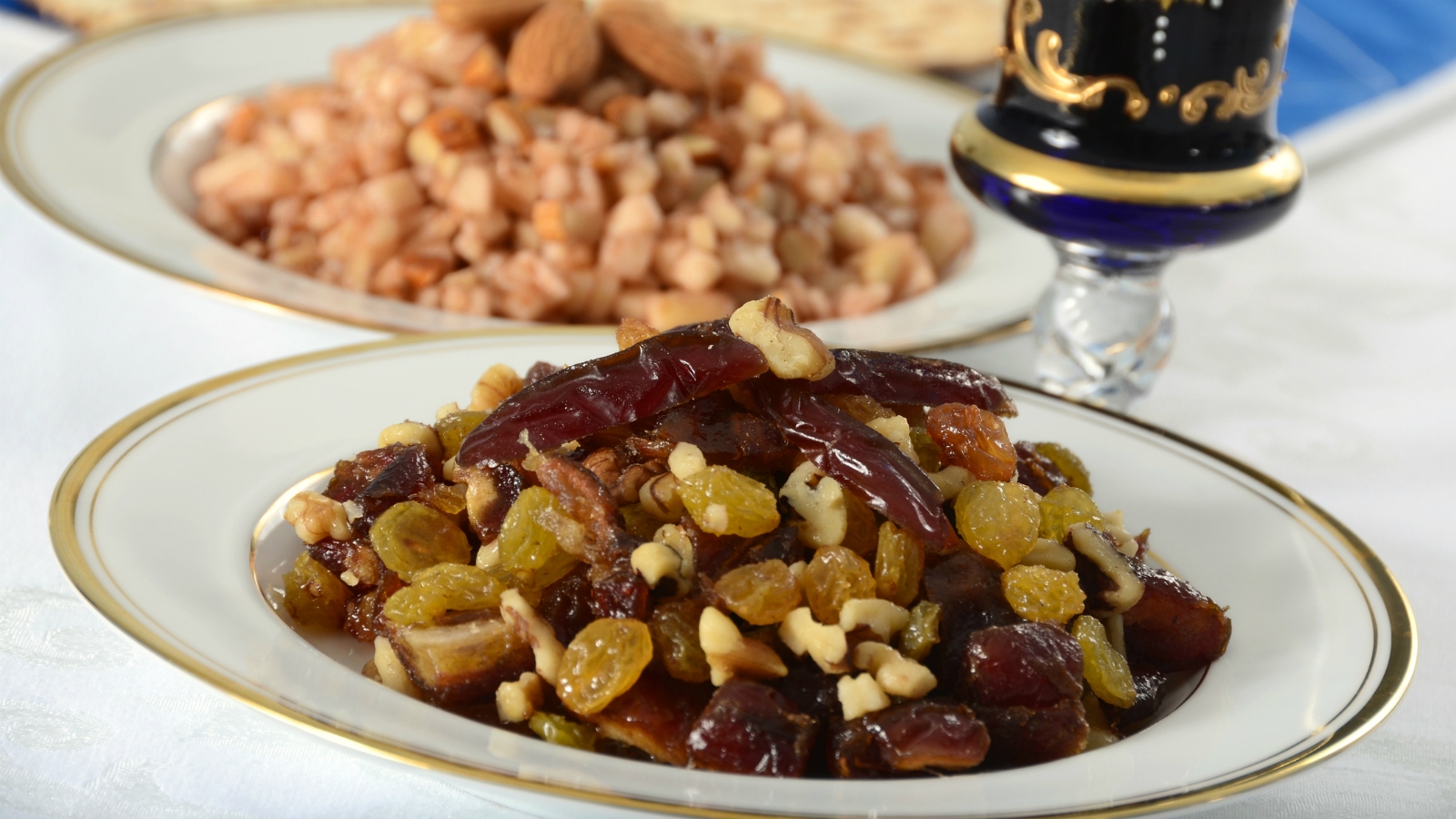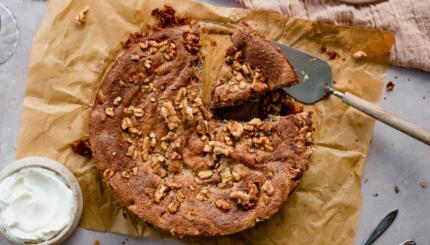Haroset from Egypt
Dates, raisins and nuts symbolize the mortar of our Egyptian toil, re-envisioned by a later era of Egyptian Jews.
On the Passover seder plate, haroset symbolizes the mortar used by slaves in Egypt.
Reprinted with permission from The Book of Jewish Food: An Odyssey from Samarkand to New York, published by Alfred A. Knopf, Inc.
Ingredients
1/2 cup (60 g) walnuts coarsely chopped
1/2 cup (125 ml) sweet red Passover wine
1/2 lb (250 g) pitted dates, chopped
1/2 lb (250 g) large yellow raisins or sultanas
Directions
Put the dates and raisins/sultanas with the wine in a pan. Add just a little water to cover. Cook on very low heat, stirring occasionally, until the dates fall apart into a mush. Cook until it thickens to a soft paste. Pour into a bowl and sprinkle with walnuts.
seder
Pronounced: SAY-der, Origin: Hebrew, literally "order"; usually used to describe the ceremonial meal and telling of the Passover story on the first two nights of Passover. (In Israel, Jews have a seder only on the first night of Passover.)



